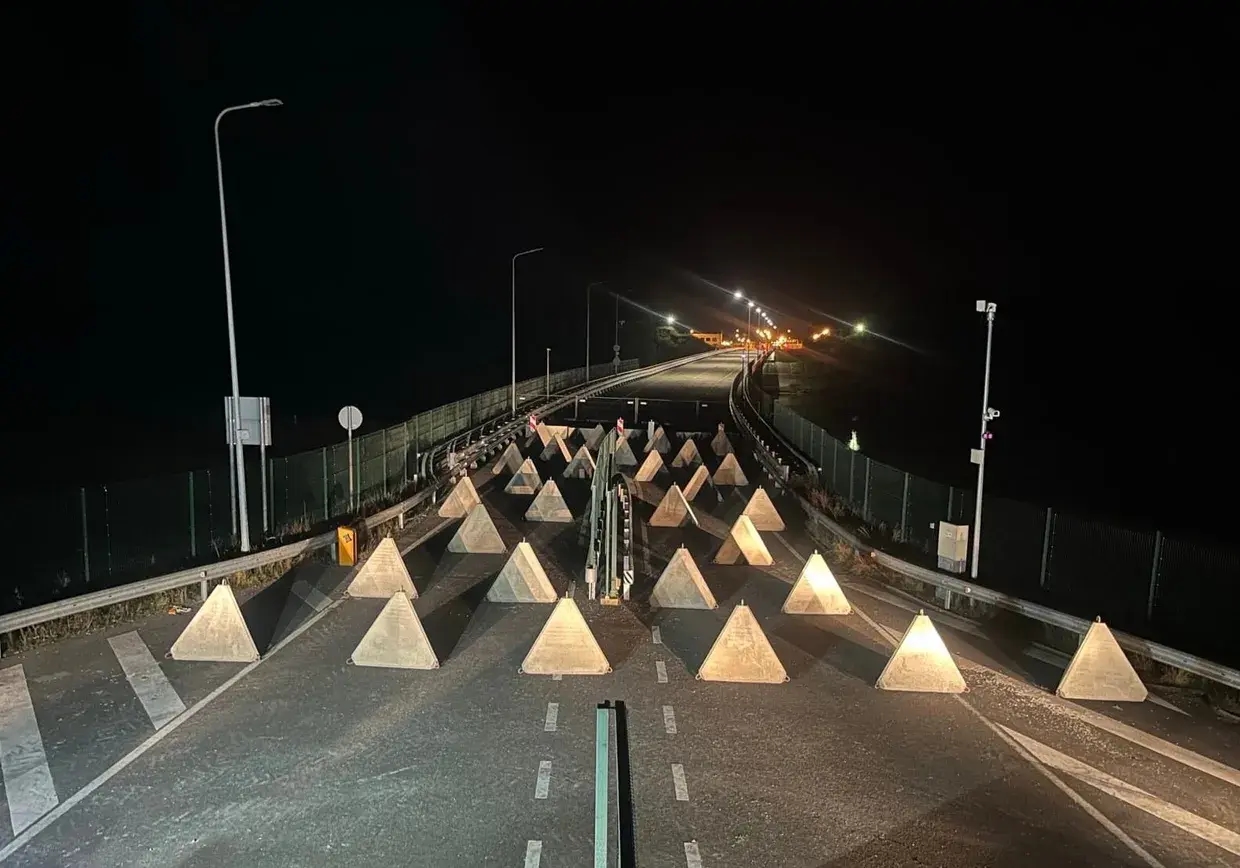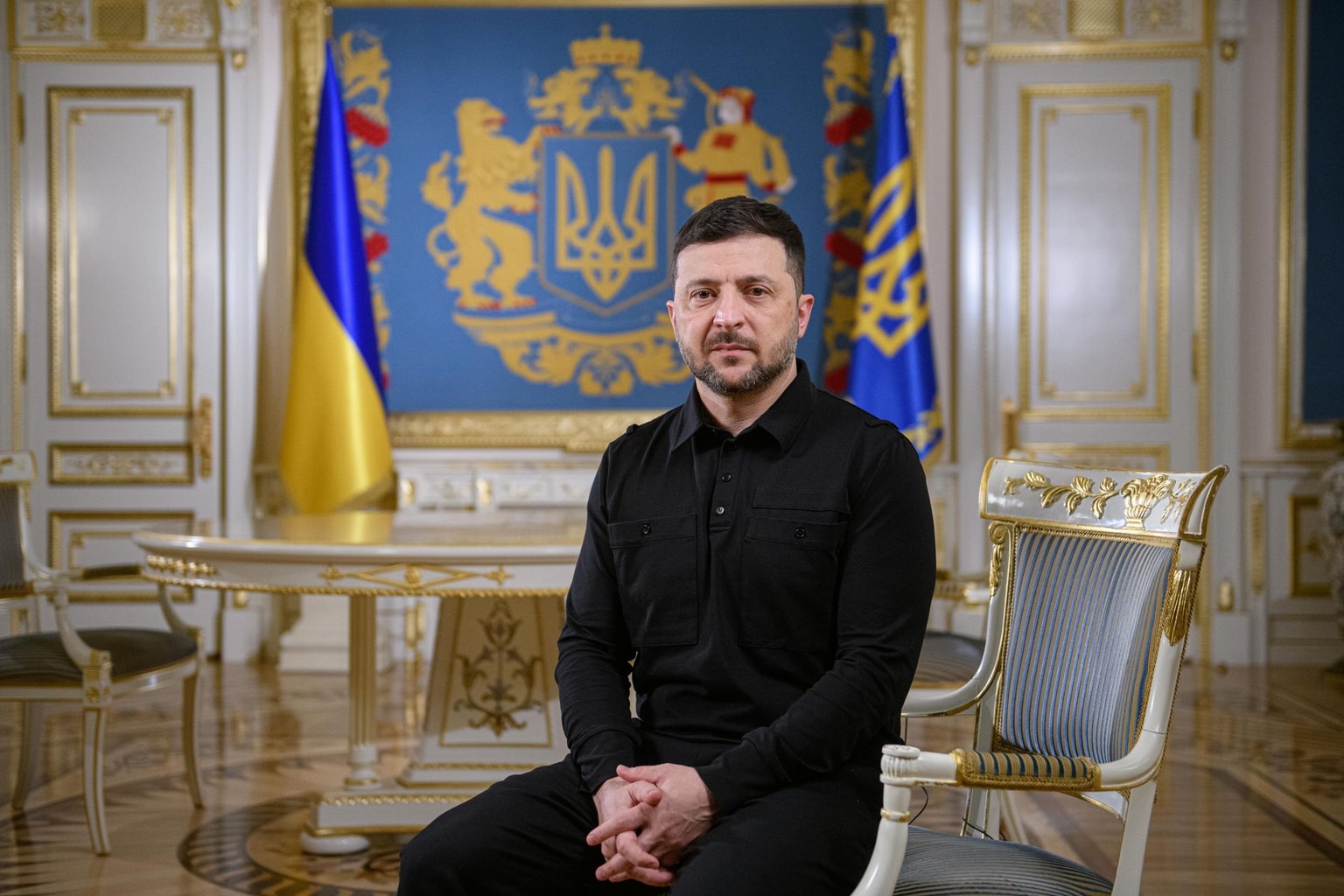
Why the Baltic States fear Russia's Kaliningrad exclave
Ships anchor in the Russian Baltic exclave of Kaliningrad, the city formerly known as Königsberg, Russia on July 15, 2022. (Ulf Mauder/picture alliance via Getty Images)
Lithuania announced this week it had blocked and fortified a bridge over the Nieman River linking it to the Russian exclave of Kaliningrad, the latest in a series of escalations in the Baltic Sea region.
Russia's full-scale invasion of Ukraine exacerbated fears of a potential open conflict between Moscow and NATO, with Lithuania, bordering Russia's ally Belarus and Kaliningrad Oblast, finding itself one of the first countries threatened by such a clash.
A picture released by Lithuania's Defense Minister Laurynas Kasciunas on Oct. 9 showed his country is taking the threat seriously. The bridge in question is now covered in "dragon's teeth." He said other bridges leading to Kaliningrad would also be fortified, and some may even be mined.
The announcement came days after an incident on the Kaliningrad-Moscow railway line. One carriage of a train arrived at the Kena checkpoint at the Lithuanian-Belarusian borders displaying the letter Z, a symbol commonly used by Russian invasion forces in Ukraine.
Another had been defaced with an inscription describing Vilnius, Lithuania's capital, a "Russian city."
"It's understandable that the Lithuanian government is worried about this," Dr Stephen Hall, lecturer in Russian and post-Soviet politics at the University of Bath, told the Kyiv Independent.

"The Baltics have a long history of being occupied by other foreign forces, particularly Russia, and a relatively short history of being independent."
He adds that while he "doesn't expect to see Russian tanks in Riga or Tallinn, or Vilnius anytime soon," Lithuania and the other Baltic States are right to be concerned about what Russia is up to in the exclave right on their doorstep.
Kaliningrad Oblast is a small piece of land measuring 15,100 square kilometers — not much larger than the U.S. state of Connecticut — sandwiched between Poland and Lithuania. It has a short, western coastline on the Baltic Sea. Its capital is also called Kaliningrad.
Though it may be small, strategically it gives Russia a second point of direct access to the Baltic Sea, the other being through its most eastern arm in the Finnish Gulf.
Russia's Baltic Sea Fleet has its headquarters and main base in Kaliningrad Oblast. The headquarters of the Russian Admiralty is based in St. Petersburg, also located on the Baltic Sea.
"Kaliningrad is basically a military base with a city in the middle," Dr Hall said, adding: "You have quite a few ships there, and what is necessary to defend those ships."
"Kaliningrad is basically a military base with a city in the middle."
A December 2023 report from the Carnegie Endowment for International Peace said the exclave was home to a "formidable" arsenal of weapons that includes "cruise missiles, surface-to-air missiles, and nuclear weapons."
But Lithuania's blocking of bridges suggests the country fears not only the threat posed by missiles, but that of an actual land invasion itself.

According to Dr Hall, the focus of not just Lithuania's, but also Latvia and Estonia's fears, is a narrow piece of land called the Suwalki Gap.
The Suwalki Gap is the closest point between Kaliningrad Oblast, and one of Russia's staunchest allies, Belarus.
It's a mere 40 kilometers wide and closely tracks the Poland-Lithuania border on the Polish side.
In the event of a war between NATO and Russia, Russian and Belarusian forces linking up across the Suwalki Gap would cut off the only land route to all three Baltic States.
"And that has been something that since the 1990s, the Russian army has trained for," Dr Hall said.
He adds that while the recent NATO memberships of Finland and Sweden will likely have changed NATO planning for such an event, for a long time "the idea among NATO members was that Lithuania, Latvia, and Estonia were going to have to accept Russian occupation — hopefully only for a little while — as NATO forced its way back up the Baltic peninsula."
And it's not just the Baltic States raising the alarm about Russian intentions in the region. In May, NATO's newest member, Sweden, issued an ominous warning with Micael Byden, the supreme commander of the Swedish Armed Forces, saying Russian President Vladimir Putin may be seeking dominance over the Baltic Sea and has his eye on the Swedish island of Gotland.
Located around 330 kilometers (around 200 miles) north of the Russian exclave Kaliningrad, Gotland is Sweden's largest island. Its central location means it is of vital strategic importance in the Baltic Sea.
"Who controls Gotland controls the Baltic Sea," said Byden.
While warnings about a clash between Russia and NATO have mounted since Moscow launched its full-scale invasion of Ukraine in 2022, most analysts and commentators suggest such a scenario is not imminent.


Germany's military has drawn up plans for "a conventional attack by Russia within five years," In January, a top NATO official gave a timescale of "the next 20 years."
And with Russian forces committed in Ukraine and Russia's Kursk Oblast, Lithuania's blocking of bridges to prevent a Russian ground attack could come across as premature.
But according to Dr. Jan Kallberg, a senior fellow at the Center for European Policy Analysis, Washington D.C., and a fellow at the Army Cyber Institute at West Point, seeing Lithuania's actions in such a way misses the point.
"The Lithuanians, Estonians, Latvians, and Poles are under constant intimidation from the Russian supremacist regime seeking to project that these countries, or parts of their countries, in a Russian mindset are provinces that have rebelled and need to be forced back into Russia," he told the Kyiv Independent.
The Soviet Union annexed Lithuania along with other Baltic countries in World War II, with the nation declaring independence only in 1990.
"Mining and blocking border bridges is a way to signal that you are not intimidated and ready to fight for your freedom," Kallberg adds.
Dr Hall agrees, suggesting the U.S. and other European countries could have benefitted from taking a similar stance both before and during Russia's full-scale invasion of Ukraine.
"It's better to be proactive and send a strong signal now in the hope that Russia will see that signal and decide it's not worth it, something I think Western states have failed to do continuously regarding Putin," he said.
"It's better to be proactive and send a strong signal now in the hope that Russia will see that signal and decide it's not worth it."
And even if a Russian invasion of NATO territory is years away, Kaliningrad plays a crucial role in Russia's ongoing efforts to destabilize the region.
Moscow has been ratcheting up tensions in the Baltic Sea, with GPS jamming, disappearing buoys, and an aborted "ocean-grab" just some of the events this year that have raised concerns about the Kremlin's intentions in the region.
Incidents of jamming the GPS systems aboard commercial aircraft over the Baltic Sea region have soared in recent months. While it's almost impossible to prove who is responsible definitively, a jammer blocks a signal from the point where it is deployed up to a distance of 350 kilometers for some military-grade models.
With NATO countries highly unlikely to be engaging in self-sabotage, Russia is the main suspect, and a jammer located in Kaliningrad would give them the range required to disrupt flights in the region.
With an ongoing Russian hybrid war against the West and the looming possibility of a direct clash with NATO on the horizon, the situation with Kaliningrad and its Western neighbors appears to be only headed in one direction.
"In the long run, we might see a development of these Baltic and Polish borders to Russia and Belarus similar to the Korean 38th parallel between South Korea and North Korea," Kallberg said.
"A militarized border that is a never-ending propaganda battle using all forms of intimidation and propaganda measures, and on and off, and even open aggression."











